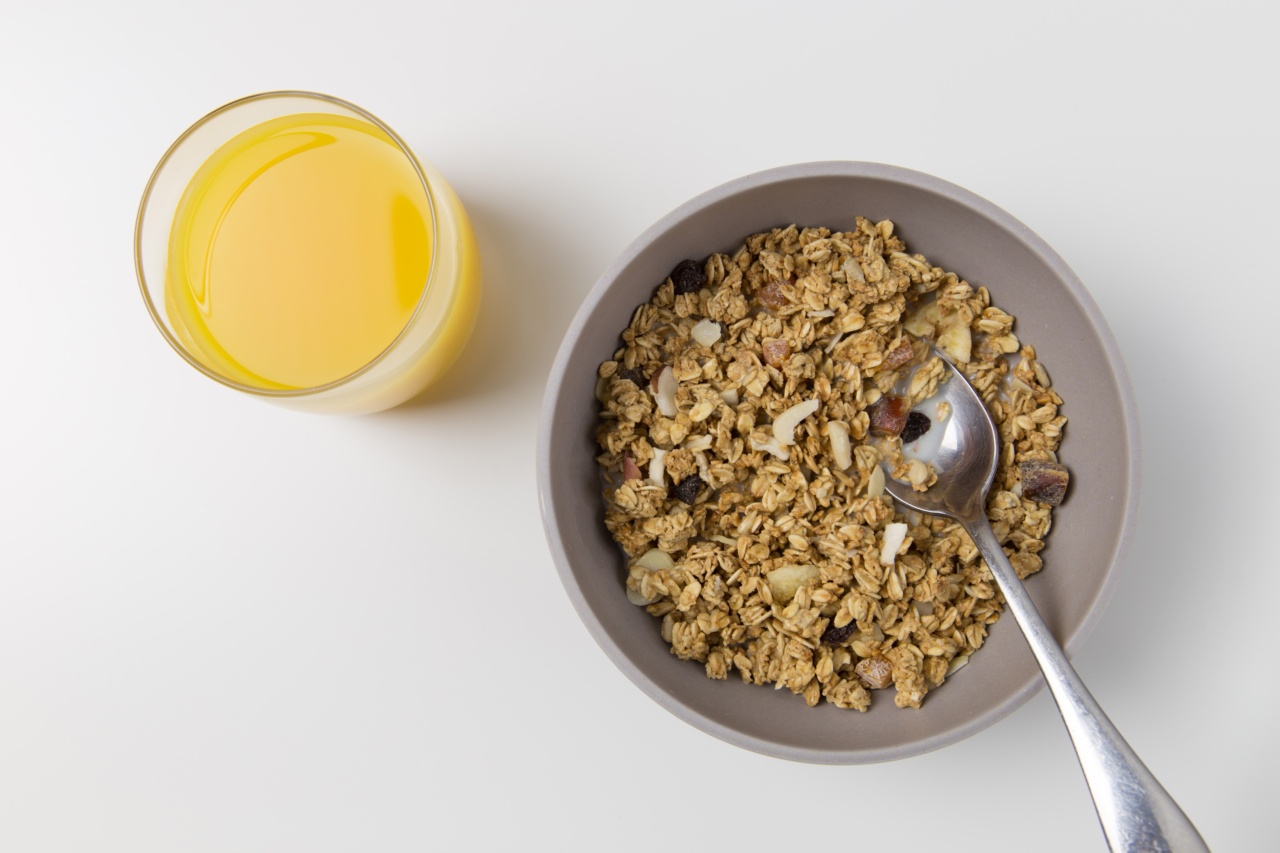Atopic dermatitis, also known as eczema, is a chronic skin condition characterized by red, itchy, and inflamed skin. It affects millions of people worldwide, causing discomfort and distress.
While there is no cure for atopic dermatitis, there are various ways to manage and alleviate its symptoms. One effective approach is incorporating a fiber-rich diet into your daily routine. In this article, we will explore the benefits of a fiber-rich diet in managing atopic dermatitis and how it can improve overall skin health.
The Role of Fiber in the Body
Fiber is a type of complex carbohydrate found in plant-based foods. It has a crucial role in maintaining good digestive health and overall well-being. There are two types of fiber: soluble and insoluble.
Soluble Fiber and its Benefits
Soluble fiber dissolves in water and forms a gel-like substance in the digestive tract. It helps to regulate blood sugar levels and maintain cholesterol levels within a healthy range.
Studies have also shown that soluble fiber can help control inflammation and boost the immune system, making it particularly beneficial for individuals with atopic dermatitis.
Insoluble Fiber and its Benefits
Insoluble fiber does not dissolve in water and adds bulk to the stool, preventing constipation and promoting regular bowel movements. It acts as a natural cleanser for the digestive system, removing toxins and waste products.
This cleansing effect can help reduce the body’s overall toxic load, which may contribute to flare-ups of atopic dermatitis.
Fiber-Rich Foods to Include in Your Diet
There are numerous fiber-rich foods that you can incorporate into your daily diet to experience the benefits for atopic dermatitis management. Some examples of these foods include:.
- Fruits: Apples, pears, berries, oranges
- Vegetables: Broccoli, carrots, Brussels sprouts, spinach
- Whole grains: Oats, quinoa, brown rice, whole wheat bread
- Legumes: Lentils, chickpeas, black beans
- Nuts and seeds: Almonds, flaxseeds, chia seeds
How Fiber Helps Manage Atopic Dermatitis
1. Reducing inflammation: The soluble fiber found in fruits, vegetables, and whole grains has anti-inflammatory properties that may help reduce the inflammation associated with atopic dermatitis.
It can alleviate itching, redness, and swelling, providing relief to individuals with this condition.
2. Regulating the gut microbiome: The gut microbiome plays a crucial role in immune system function and overall health.
Research suggests that a fiber-rich diet promotes the growth of beneficial bacteria in the gut, which can positively impact the immune system and potentially improve atopic dermatitis symptoms.
3. Supporting detoxification: Fiber acts as a natural cleanser for the digestive system, helping to remove toxins and waste products. By reducing the body’s toxic load, fiber may contribute to a reduction in atopic dermatitis flares and severity.
4. Promoting regular bowel movements: Insoluble fiber adds bulk to the stool and helps regulate bowel movements.
This can be particularly beneficial for individuals with atopic dermatitis, as constipation and irregular bowel movements may contribute to skin inflammation and worsening of symptoms.
Tips for Increasing Fiber Intake
Increasing fiber intake can be achieved by making simple changes to your daily diet. Here are some tips to help you incorporate more fiber into your meals:.
- Start the day with a high-fiber breakfast, such as oatmeal topped with berries and a sprinkling of flaxseeds.
- Choose whole wheat or sprouted grain bread for sandwiches and toast.
- Add legumes, such as black beans or lentils, to salads, soups, and stews.
- Snack on raw vegetables, like carrots or celery, with hummus.
- Replace refined grains with whole grains, such as quinoa or brown rice.
- Include a variety of fruits and vegetables in your meals and aim to fill half of your plate with them.
- Incorporate chia seeds or ground flaxseeds into smoothies, yogurt, or homemade granola.
- Drink plenty of water throughout the day to aid digestion and ensure optimal fiber function.
Consult Your Doctor
While a fiber-rich diet can have numerous benefits for managing atopic dermatitis, it is essential to consult with your healthcare provider before making any significant dietary changes.
They can assess your individual needs, consider any potential medication interactions, and provide personalized recommendations specific to your condition.
Conclusion
A fiber-rich diet offers several advantages for individuals with atopic dermatitis.
From reducing inflammation and promoting gut health to supporting detoxification and regular bowel movements, fiber can significantly contribute to the management of this chronic skin condition. By incorporating fiber-rich foods into your daily meals and following a well-balanced diet, you can potentially experience relief from the symptoms of atopic dermatitis and improve your overall skin health.































